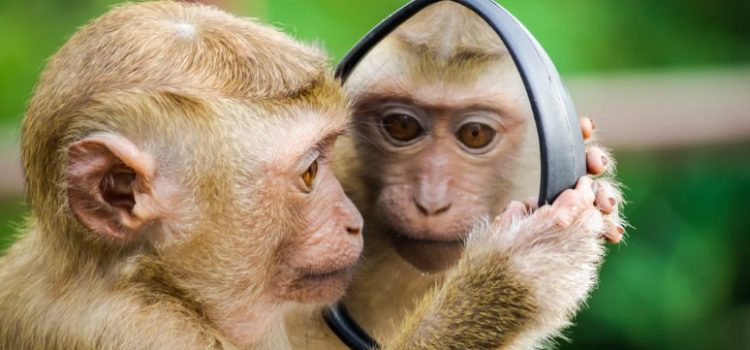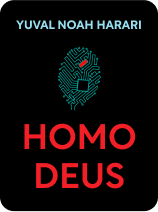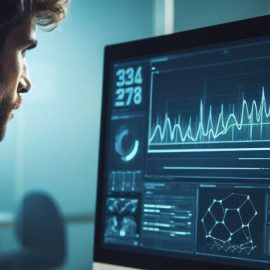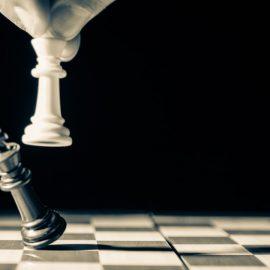

This article is an excerpt from the Shortform book guide to "Homo Deus" by Yuval Noah Harari. Shortform has the world's best summaries and analyses of books you should be reading.
Like this article? Sign up for a free trial here .
Are animals vs humans really that different? What do animals and humans have in common?
In the modern world, most people believe animals vs humans are fundamentally different. Animals are considered lower beings, a perspective that has dominated human culture for millennia. But it turns out that animals and humans have much more in common than most people think.
Keep reading to learn about the similarities between animals vs humans.
Animals vs Humans
While animals certainly are not as intellectually advanced as humans, they do possess a basic level of intelligence. For example, researchers have discovered that pigs have a high level of intelligence. They communicate with one another, form relationships, and can even operate simple computer games. They also need social, emotional, and intellectual stimulation to be happy.
While animals certainly don’t feel the same complex range of emotions as humans do, they do have strong emotional needs. One of the universal emotions among mammal animals is the bond between a mother and its offspring. For most mammals, offspring can’t survive without the attention of their mother, and mothers will ferociously fight for their children’s survival. While people have discovered how to survive without maternal protection, parental bonds are still essential to emotional development.
This is a relatively recent discovery. In the early-20th century, behaviorists told parents to keep their distance from their children. They believed that giving children too much attention would lead to them becoming too dependent.
However, by the mid-20th century, researchers concluded that parental relationships are more important for mammals than previously thought. In a series of studies, researchers stripped young monkeys from their mothers and left them in isolation. When later given the choice between milk and a motherly doll, they always chose the doll, proving that emotional instincts in mammals will often trump survival instincts.
Despite this knowledge, people still separate domesticated animals from their offspring today. What researchers did to several hundred monkeys in the aforementioned study, the agricultural industry does to billions of animals per year. They strip young animals from their parents and raise them in tiny cages. They don’t care about the emotional needs of the animals as long as they survive long enough to provide food and reproduce.
Organic Algorithms
Refuting past claims that animals vs humans are vastly different, scientists have theorized that all mammals are organic algorithms. Algorithms are steps followed to solve problems, perform calculations, and make choices. They can be as simple as basic arithmetic and as complicated as artificial intelligence. For example, a vending machine uses the following algorithm:
- Wait for payment from a user.
- Once payment is made, wait for button inputs.
- Once the button inputs are made, release the item at the corresponding location.
- Once the item is delivered, provide any leftover change from the purchase.
- Once change is delivered, show a “thank you” message, then wait for the next payment.
According to researchers, organic algorithms are run by emotions, thoughts, and sensations. Determined by genetics, these experiences control behavior by creating instinct. Instinct exists for two reasons: risk/reward calculation and reproduction.
Risk/Reward Calculation
Every day, mammals must balance risk with reward. Often, they have to take risks in order to gain necessary components for survival and happiness. However, if their algorithm is out-of-balance, their instincts may lead them down one of two dangerous paths:
- If someone’s algorithm leads them to take too many risks, they’re more likely to die as a result of recklessness. For example, if a person decides to scale the exterior of a skyscraper without safety gear just to “get a thrill,” the risk may lead to their death without the promise of much reward.
- If someone’s algorithm leads them to take too few risks, they’re more likely to die because they’ll be unable to fulfill their basic needs. For example, if a giraffe is too afraid of the lions surrounding a watering hole, it may not take the necessary actions to stay hydrated.
Reproduction
Instincts are directly related to attraction. A mammal’s internal algorithm kicks in and converts dozens of small factors such as body shape, facial structure, and pheromones into an assessment of “beauty.” For example, many people view a strong jawline, a good physique, and healthy skin as signs of male beauty. Likewise, peacocks view a large tail, colorful plumage, and a strong beak as signs of male beauty. In both cases, beautiful males are more likely to find mates and continue their genetic lineage.
Mammals instinctively search for beautiful mates because the brain associates beauty with good genes. This ensures that only the best genetics are being passed down through offspring. If a mammal has “bad genes,” they likely won’t be able to find a mate, and their genetic lineage will die off with them.

———End of Preview———
Like what you just read? Read the rest of the world's best book summary and analysis of Yuval Noah Harari's "Homo Deus" at Shortform .
Here's what you'll find in our full Homo Deus summary :
- Why technology is replacing humanist ideals
- How previous generations relied on prayer to deal with serious problems
- How AI and algorithms are going to run the world






